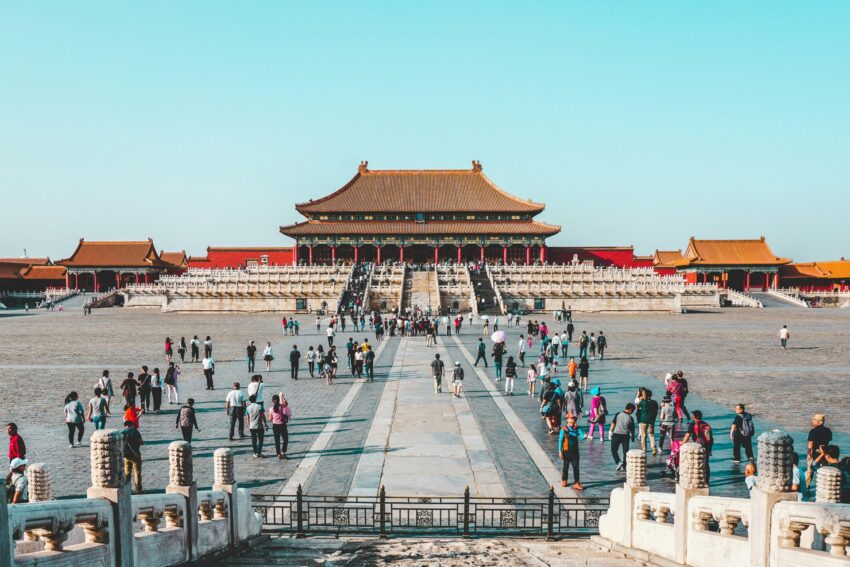China continues to attract global travelers with its diverse array of historical landmarks, rich cultural heritage, and stunning natural beauty. From the Forbidden City to the Li River, the country offers more than just sightseeing. It provides access to stories that are layered in centuries of tradition and diverse landscapes. Here, this article explains how to experience the most remarkable parts of the country on a budget.
Use Local Transport
The intercity train system in China in the region is affordable and reaches nearly every major destination. Tourists can opt for second-class seats on trains for a more comfortable experience. Long-distance buses are another option for travelers with flexible schedules. They cover overnight routes and cost less than trains. Bus stations in cities like Kunming or Chengdu operate routes to mountain towns and cultural sites where train access may be limited.
Visit Free Heritage Areas
Many scenic spots in the country have maintained low-cost or free entry. Historic areas such as Pingyao Ancient City or Gulangyu Island do not require high admission fees. Local maps are available at tourism centers without charge, and you can also navigate using online maps if you have a China esim.
Urban areas in China like Xi’an and Suzhou have designated pedestrian routes that connect parks, pagodas, and local markets. These trails feature detailed signs in both Mandarin and English, enabling travelers to navigate between attractions without incurring additional costs for guides or paid services. The experience remains authentic and manageable for those watching expenses.
Book Affordable Stays
Affordable lodging is widely available around train stations and college areas. Hostels and basic hotels in these zones cater to short-term stays. They offer basic amenities, including shared kitchens and coin-operated laundry facilities.
City districts around institutions like Wuhan University or Yunnan Normal University have reliable guesthouses that remain safe and budget-friendly. These zones are well-lit, have easy access to food stalls, and are usually close to metro or bus stops. The availability of short-term options makes it easier to plan stays around local events or last-minute travel changes.
Eat Where Locals Eat
Dining in local markets, small restaurants, and street corners brings both affordability and quality. Cities such as Chengdu, Xiangyang, and Nanning offer meals at public food courts or wet markets. Prices are listed clearly, and meals are cooked fresh in front of customers.
Rice dishes, hand-pulled noodles, dumplings, and stir-fried greens are available at budget-friendly rates. Meals can cost as little as one-fourth of what branded or tourist-facing restaurants charge. Many vendors accept mobile payment apps, and portions are often generous. For travelers seeking both culture and savings, this approach delivers both.
Use Passes For Attraction
Some provinces offer combination tickets that cover multiple attractions within a region. These bundles are valid for several days and can be purchased at metro stations or official counters. They reduce the total cost per site and help avoid buying separate tickets at each stop.
Places like Guilin and Yangshuo promote river cruises and hill pass combinations. In Chengde, passes include access to multiple imperial temples and scenic gardens. These bundles are especially useful in locations with clustered attractions, saving time and money while allowing for a wider exploration of local areas.
Avoid Peak Seasons
Prices rise sharply during the region’s peak travel seasons, especially around Lunar New Year and National Day. Planning trips just before or after these events helps avoid crowds and high lodging costs. Hotel rates and ticket prices drop during mid-week stays and off-season months.
The months of March, April, October, and November often offer better deals, cooler weather, and fewer visitors. During these times, access to parks, historical sites, and public transit becomes smoother and less expensive. Aligning travel with school term periods or agricultural off-seasons ensures easier movement and availability across most destinations.
Rely on Mobile Tools
Mobile-based services and real-time apps help visitors stay updated on route changes, lodging availability, and price fluctuations. Digital transit maps aid in metro planning in cities like Shanghai and Guangzhou. Online platforms also help identify public walking trails, city passes, and shared ride options that are accessible without language barriers.
Having a China esim allows travelers to adjust plans quickly and avoid unnecessary expenses. Access to maps, local communication tools, and booking platforms makes it easier to find regional discounts or make last-minute itinerary changes. These digital tools reduce travel pressure and allow smoother movement across unfamiliar zones.
Conclusion
The place presents a unique blend of cultural depth, geographic diversity, and timeless traditions across every region. Using a China esim helps travelers explore these layers without losing access to essential services. Hence, budget travel in this culture-rich country becomes a matter of smart choices, not limited options.
The post How to Experience China’s Best Attractions on a Tight Budget appeared first on Knewz.
Click this link for the original source of this article.
Author: Samyarup Chowdhury
This content is courtesy of, and owned and copyrighted by, https://knewz.com and its author. This content is made available by use of the public RSS feed offered by the host site and is used for educational purposes only. If you are the author or represent the host site and would like this content removed now and in the future, please contact USSANews.com using the email address in the Contact page found in the website menu.








